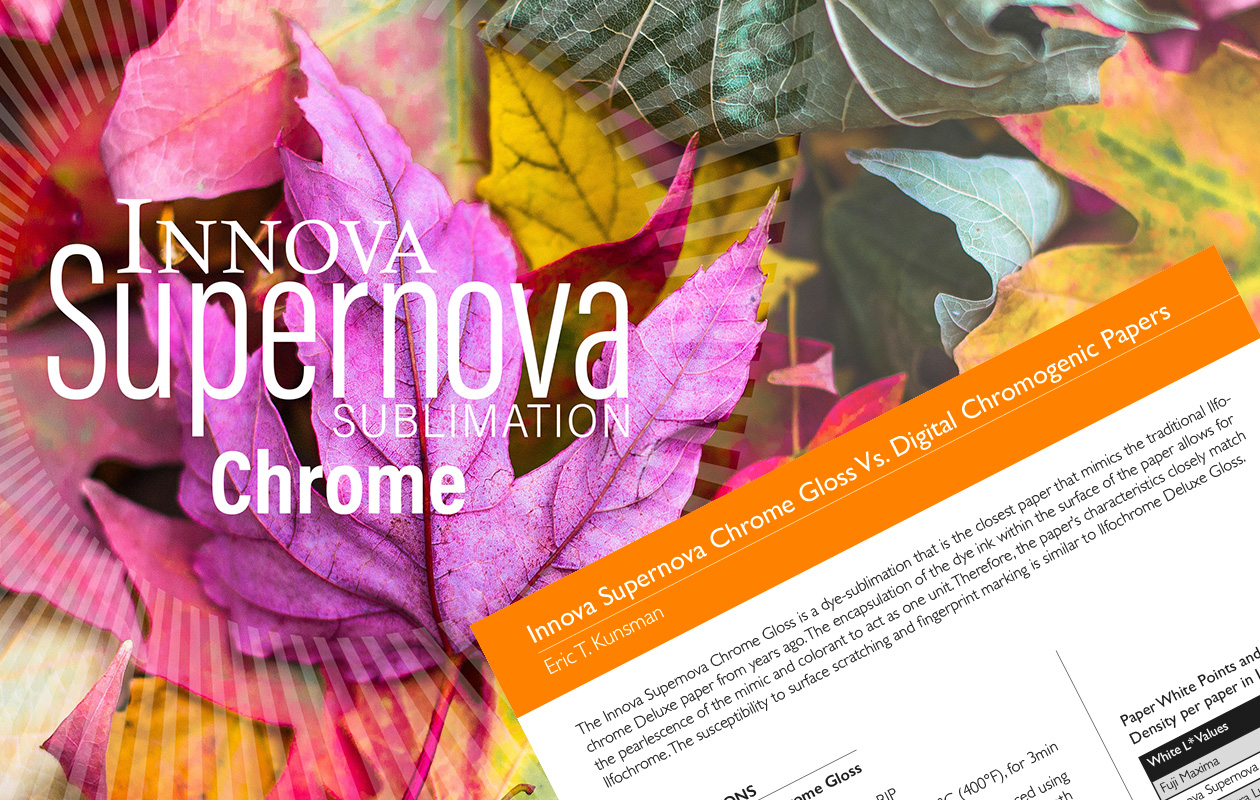After an introduction to Innova Supernova Chrome as a dye-sublimation alternative to the C-Print process, Eric T. Kunsman decided to investigate further.
Kunsman has years of experience using Lambda printers to produce C-prints using the RA (Radio Alpha) 4 silver halide process. These years of experience have shown him that not only are Lamda printers capable of excellent output quality, they can also be difficult and expensive to maintain.
The dye-sublimation process on the other hand is a growing technology. The output on Innova Supernova Chrome mimics the continuous tone of the traditional RA4 C-print process.
Dye-sublimation printers and presses can be run using a relatively low maintenance process, without the need for multiple recalibrations per day required when using RA4.
On top of that the cost to set up a dye-sublimation process from scratch can be as little as one-quarter of the set-up for an RA4 process and the learning curve is not particularly steep.
After seeing an example of Innova Supernova Chrome, Kunsman felt the output visually matched the C-print quality. But did it match on a technical level?
As an assistant professor at Rochester Institute of Technology (RIT), he set his students the challenge to find out. Working alongside the visual communications students, Kunsman developed a series of intensive tests to analyse the performance of Innova Supernova Chrome in comparison to the leading RA4 process medias.
The results spoke for themselves. Innova Supernova Chrome matched or out-performed the RA4 medias in every area. Leading to the conclusion that it is a true alternative for traditional processes using media such as Ilfochrome Deluxe Gloss.

